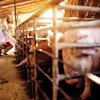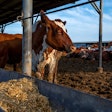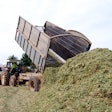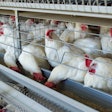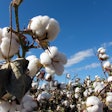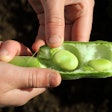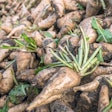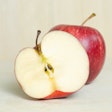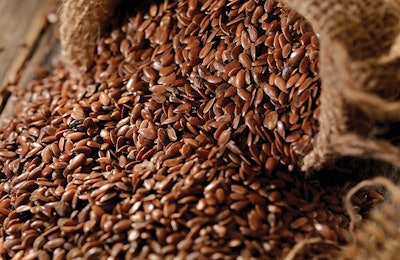
Refocusing on an archaic ingredient may not save the planet, but it can offer exciting new opportunities for innovation in the feed industry.
Linseed (also known as flaxseed in recent times) is known from before the times of Egyptian mummies to Leonardo da Vinci’s paintings to relatively modern linen undergarments, bedsheets and tablecloths.
Linseed was so essential that Carolus Linnaeus (1707-1778) named it Linum usitatissimum, which means “of so many uses.” Linseed was perhaps the main plant cloth fiber source for humanity, and it was threatened but not uprooted by cotton and other fibers such as wool, although it has been virtually wiped out by synthetics. Now, it is revived in regions where it can be grown profitably. It requires a cold climate, unlike soybeans; major producers include Canada, Russia and China.
Linseed in action
Today, linseed is used primarily for its oil (paints and other industrial uses) and fibers (trendy cloths, mixed threads, quality paper), but also is known as a super food for humans. Futuristic applications include fiberglass and plastic composites from its fibers, functional foods and supplements based on the rich omega-3 fatty acids in the oil.
The seed is a great laxative as it contains mucilage, a soluble substance that can also protect gut mucous membranes when used at the right proportions. A poultice made up from ground-up linseeds was often used as a wound dressing in folklore medicine, and today it is considered as a source of anti-inflammatory activity. So, there might be even more unexplored substances in this usitatissimum seed.
About linseed
Typical feed products include residual fiber (we need to investigate if it can be used in animal nutrition as a functional additive now that ground-up fibers are in vogue), oil (is it good only for omega-3 enriched products?), and oil extracted linseed meal. The solvent extracted linseed meal is a protein-rich byproduct containing 30-35% protein, 1-2% oil, 10% fiber, and high levels of selenium (up to 1 ppm). It can be used in all monogastric and ruminant diets to replace other protein sources, mainly soybean meal, but not totally.
Linseed contains a powerful anti-nutritional factor (linamarine, a cyanogenic glucoside) and lower lysine concentration. In addition, it contains a vitamin antimetabolite (that has confounded many research attempts). Practical issues include lack of commercial standardization — solvent versus pressed, yellow versus brown seeds, fiber versus oil varieties — and lack of global availability.
Linseed in animal feed
Feeding solvent linseed meal (the most widely available type) is limited to less than 5% and 10% for young and mature poultry, respectively. Roughly the same conservative numbers apply to swine feeding. More liberal application is possible for ruminants, where it can be used to supply up to 0.5% of body weight, e.g. a dairy cow may consume up to 2-3 kg linseed meal per day.
It can also be used in other species such as horses and rabbits, and it is an interesting ingredient (as a whole seed) in pet bird seed mixes and calf muesli starters, again, in rather conservative concentrations. There is tremendous interest in using whole linseed because the oil in ground-up products is easily oxidized (hence its great use in oil-based paints). Nevertheless, it is highly prized by pet owners because it improves hair health.
Despite all of the above, linseed remains an underutilized and practically forgotten ingredient. The need for nifty materials in the modern world is recognized by other industries and the same should apply in the feed industry. Linseed can be the source material of such breakthrough.

